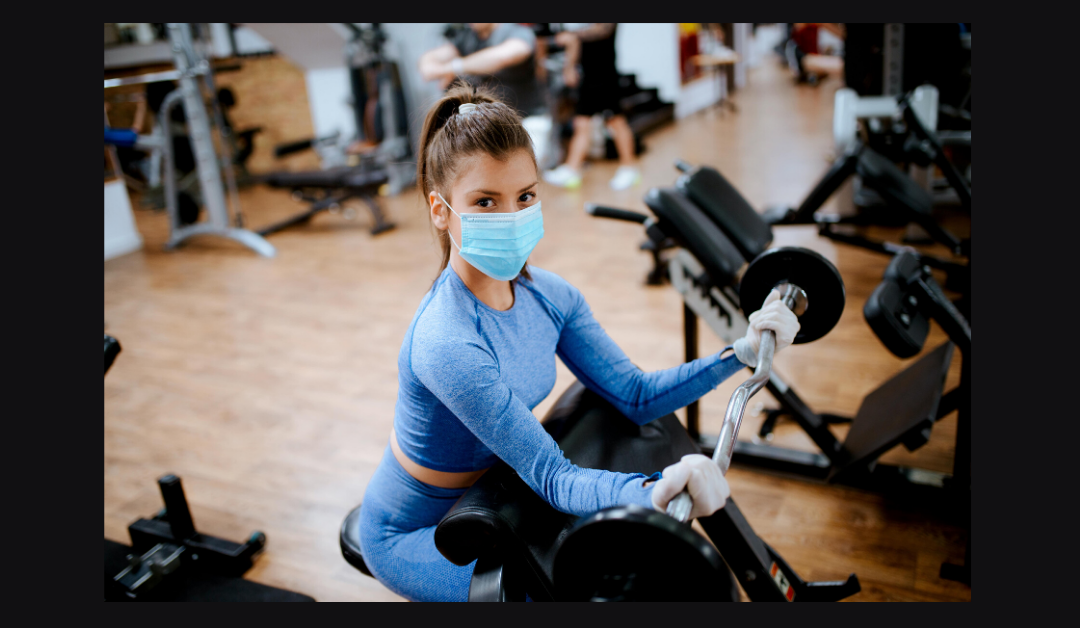The coronavirus has been devastating across the globe and the subsequent lockdowns have brought countless side-effects. Besides the rise in domestic violence, child abuse, drug and alcohol abuse, and a decline in mental wellness, the economy continues to take a toll. Many industries have been shattered, among them the travel and hotel industry, sports, entertainment, retail, restaurants, nightlife, and the auto industry.
Another industry being stunned, and very much close to my heart, is the fitness industry. Gyms and fitness studios across the country were shut down for months and closing more than 38,000 facilities. As a result, at least 500,000 fitness club employees were furloughed, gym memberships were frozen, and numerous gyms were forced to file for bankruptcy.
Changes to Gyms & Studios
In some states, fitness facilities haven’t been allowed to open up yet. But the ones that have opened look much different than the way they use to look before COVID-19 hit. The following are some of the changes taking place at gyms and fitness facilities around the globe:
- Hygienic Staff: The staff is being provided with masks and gloves, and more janitorial personnel is being available for continuous cleaning.
- Symptom Monitoring: Temperature checks are required in some places.
- Different Operating Hours: Hours of operations are shorter at some locations.
- Limited Occupancy: Partial occupancy and prescheduled slots for workouts and classes are being arranged, as well as preorders for their juice bars.
- Sanitized Environments: Many renovations include touch-free check-ins, better ventilation to improve air quality, development of more sanitary spaces, and hospital-grade cleanings, as well as virus-killing UV light wands and liquid sanitizers for hands and equipment, are being more available.
- Socially-Distanced Workouts: Fitness equipment (workout machines, bikes, treadmills, etc.) is ensuring proper social distancing. Some gyms have even installed plexiglass barriers to keep exercisers’ sweat and germs contained.
- Masks: Many gyms are requiring members to wear masks. Yet, masks can be dangerous when engaging in strenuous physical activity. Some people have passed out and even died when running with masks.
- Changes in Classes: Some group sessions are being moved outdoors and the rooms for group classes now have markers on the ground to space out members at least 6 feet apart.
- Online Fitness: Many gyms and studios have adopted virtual classes via Zoom, Instagram, and YouTube.
Mindset Changes
Despite the requirement for masks, which can be hazardous, shorter hours, and maybe the inability to get into a group class, some of the changes that are taken place at fitness facilities are not that bad. What’s worse is the change that is taking place in people’s minds due to coronavirus.
The pandemic and fearful-inducing media tactics are causing apprehension and persuading people to avoid public places. A survey ran between April 24th and May 1st (10,824 gym members with respondents from 116 countries) paints a gloomy picture for the future of the fitness industry. This is what was revealed:
- 51% of all American gym members do not plan on going back to a gym when they reopen.
- 47% of all gym members globally will not return to their gyms upon reopening.
- 36% of all gym members globally have already canceled or are considering canceling their memberships.
- 52% of women and 46% of men are less likely to return to the gym when reopened.
- 19% of gym membership cancellations have taken place in the UK.
- 41% of gym members in Australia already canceled or were considering canceling their memberships.
Yet, not everything is somber. A survey by Harrison Co. conducted in April 2020 of approximately 1,000 fitness members found that:
- 37% of all survey participants indicated they would work out more now than pre-COVID-19.
- Over have of the respondents stated feeling a renewed appreciation for their health.
Another survey run between March 24th and March 30th (12,913 participants from around the globe) uncovered the following:
- People who used to exercise 1-2 times/week increased exercise by 88%
- Those who used to exercise up to 3 times/week increased exercise by 38%
- The more athletic members who used to exercise 4+ times/week decreased exercising by 14%
- 40% of respondents exercised at home for the first time during the lockdown.
The data shows us a big change in people’s mindset. A great majority of club members are concerned and even unwilling to return to fitness facilities. Other members are exercising at a greater frequency than before and are being more accepting of online fitness. So even though many people don’t feel safe going back to the gyms, many others want to exercise to remain healthy.
The Future of Fitness

The coronavirus, the lockdowns, and all the terrible effects that followed have brought many changes. Many of these changes have been negative. The biggest problem for gyms and fitness establishments now is people’s inability or unwillingness to visit physical locations, which leaves them without a source of revenue. However, these changes that challenge the status quo can also become opportunities for the fitness industry.
The following are some of the gaps that gyms, studios, and other fitness facilities need to address in the COVID-19 era in order to survive:
➡️ Gyms’ online presence and social media platforms need to continue to grow.
➡️ Lines of communication with members have to be open and flowing in order to increase connectivity.
➡️ Fitness facilities need to adopt at-home fitness offerings, either with virtual classes, online training, fitness apps, or other tools to keep members exercising.
➡️ Additional services to support members’ fat loss and fitness journeys should be available, such as nutrition consultations and meal planning.
➡️ Gyms should widen their service offerings. The demand for a holistic approach to fitness couldn’t be any more clear nowadays. Members’ health and immunity can be addressed by connecting members with providers that work on preventive health and reversal of lifestyle diseases, educating, and incorporating other wellness tools.
The gym industry is suffering due to all the changes that coronavirus has brought along. The fitness industry needs to adapt in order to survive these challenging times. The challenges, though, offer the opportunity to transform the industry so it can have a bigger impact on their members’ health.
To a Fitter Healthier You,
The Fitness Wellness Mentor



